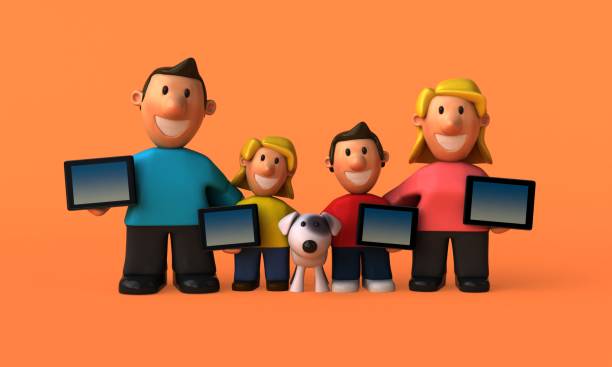
Why Inclusive Design Matters for Your Product
You might be surprised how many people click away simply because your site is hard to use. Maybe the text is tough to read, the layout feels cluttered, or important buttons aren’t easy to find. These small design issues can make a big difference, turning potential customers away before they even get to know your brand.
Let’s make your website user-friendly, engaging, and easy to navigate, so your visitors stay longer and convert more often.
Inclusive design is all about making sure digital experiences are easy to use, enjoyable, and accessible for everyone, regardless of ability, background, or situation. By thinking about the full spectrum of human diversity, inclusive design helps address not only permanent disabilities but also temporary or situational challenges.
This thoughtful approach focuses on usability for all, allowing your product to adapt smoothly across different needs, environments, and devices.
In this guide, we’ll explore what inclusive design really means, how it goes beyond basic accessibility, and why it’s a smart, long-term strategy for building better products that truly connect with more people.

What is inclusive design?
Inclusive design is all about creating products, services, or experiences that work well for everyone. It’s a design approach that considers the wide range of human diversity, whether that’s due to ability, language, culture, age, or even temporary situations like an injury.
Rather than focusing only on a “typical” user, inclusive design aims to make sure no one is left out. But that doesn’t mean building separate versions of your website or app. Instead, it’s about building one experience that offers multiple ways to interact, so all users can participate fully, in a way that works for them.
And here’s the best part: inclusive design is proactive. Instead of waiting for users to run into problems, you think ahead to remove barriers right from the start.

For example: A well-designed website that works with both a keyboard and a mouse helps not only people using assistive technologies but also someone recovering from an injury or holding a baby in one arm. That’s inclusive design in action, simple, smart, and user-friendly for all.
Want to understand what inclusive design really means? Check out the Inclusive Design , it’s a great resource for exploring its principles, background, and how it helps create more accessible, user-friendly experiences for everyone.
Why Inclusive Design Matters: Key Benefits for Your Digital Products
Inclusive design isn’t just a nice-to-have, it’s a game-changer. While it starts with accessibility, its impact reaches much further. Embracing inclusive design helps you create digital experiences that are more user-friendly, engaging, and effective for everyone. Here’s why inclusive design is essential for building successful, high-performing digital products.
Reach More People with Inclusive Design
One of the biggest advantages of inclusive design is that it helps you connect with a wider audience. When your website or app is accessible to everyone, including people with different abilities, you unlock the potential to grow your customer base significantly.
Did you know that around 15% of the world’s population lives with some form of disability, according to the World Health Organization? By embracing inclusive design, you’re not only making your digital products more user-friendly, you’re also showing that your brand values accessibility and welcomes everyone.
Accessibility isn’t just about permanent disabilities. Imagine someone using your website outdoors in bright sunlight, a low-contrast design can be hard to see. Or picture a busy parent cooking dinner who needs to navigate your app using voice commands. These are temporary or situational limitations, and they matter too.
By creating an inclusive user experience, you’re making sure your website or app is easy to use in real-world situations, for everyone.
As we age, it’s common to experience changes in vision, motor skills, and memory. Designing your digital product with older users in mind ensures they can navigate and enjoy your site just as easily. It’s not just the right thing to do , it also helps grow your audience and customer base.

Improved usability
A thoughtfully designed product doesn’t just meet accessibility standards, it creates a smoother, more enjoyable experience for all users. When you prioritize inclusive design, you naturally build a more user-friendly interface that works for a broader audience.
Think about simple features like clear navigation, larger buttons, and easy-to-read content. These aren’t just helpful for people with disabilities, they make your website or app more usable for everyone.
For example, using high-contrast text to support users with visual impairments also helps anyone dealing with screen glare or eye strain after long hours. By designing for accessibility, you’re not just helping one group, you’re creating a better digital experience for every visitor.
Better usability means happier visitors. When your website is easy to use and navigate, people are more likely to stick around, explore more pages, and take valuable actions, like making a purchase or signing up for your service.
Stay Legally Compliant with Accessible Web Design
Inclusive design isn’t just a good idea, it’s a legal requirement in many parts of the world. For example, in the United States, the Americans with Disabilities Act (ADA) requires websites to be accessible to people with disabilities. Failing to meet these digital accessibility standards can lead to lawsuits, costly fines, and damage to your brand’s reputation.
With online experiences becoming essential for everyday life, web accessibility lawsuits are on the rise. Making your website inclusive not only protects your business legally, it also shows your commitment to equal access for all. Prioritizing accessibility is a smart move that strengthens trust and builds a more welcoming brand.
Embracing inclusive design not only creates a better experience for everyone but also helps your product meet important accessibility standards. Following the Web Content Accessibility Guidelines (WCAG) is a smart way to stay compliant and avoid legal risks while building a more welcoming digital space.

Build a Stronger Brand with Inclusive Design
In today’s world, people care about the values behind the brands they choose. That’s why inclusive design is more important than ever, it helps build a strong, positive brand image that truly connects with modern consumers.
When your company makes an effort to support diversity, equity, and inclusion, it shows customers that you care. This creates a sense of trust and goodwill, which not only attracts new customers but also helps build lasting loyalty.
Inclusive design isn’t just the right thing to do, it’s a smart business move that strengthens your brand and makes your products more accessible to everyone.
Inclusive design isn’t just the right thing to do, it’s also a smart business move. While many companies still overlook accessibility in their digital products, making it a priority helps your brand stand out. By embracing inclusivity, you can connect with a wider audience, build trust, and earn lasting customer loyalty.
Inclusive design vs. universal design & accessible design
Inclusive design, universal design, and accessible design can seem similar at first but they each take a unique approach to improving usability for everyone. While they share the same goal of creating better experiences, understanding their differences helps you design more effectively for all users.
A universally designed park bench might include armrests that make it easier for people to stand up, helpful for both seniors and individuals with disabilities. Similarly, an inclusively designed digital product could offer features like dark mode or high-contrast mode, giving users more flexibility and a better, more personalized experience.
What’s the main difference? Inclusive design takes a broader approach, embracing human diversity and different life situations. Accessible design, on the other hand, focuses on meeting specific technical requirements to support people with disabilities. Want to dive deeper? Check out the Web Accessibility Initiative (WAI) for more insights.
Key principles of inclusive design
Inclusive design goes beyond adding extra features ,k it’s about building your product with accessibility and empathy at its core. By prioritizing inclusive design principles, you create better experiences for everyone who uses your product.
1. Understand and Address Exclusion
Every design decision impacts who can use your product — and who can’t. Being aware of potential barriers helps ensure no user is left out.
2. Design for One, Benefit Many
When you create a solution for a specific group, like users with visual impairments or limited mobility, you often unlock benefits for a much wider audience.
3. Provide Flexible Ways to Interact
People engage with products in different ways. Support this by offering features like text-to-speech, adjustable font sizes, and customizable navigation. The more adaptable your product is, the more welcoming it becomes.
A great place to start is Microsoft’s Inclusive Design Guidelines, which offer clear, practical principles for creating accessible experiences. You can also dive deeper with helpful tools and research from trusted sources like the Inclusive Design Research Centre and the IDEA Center. For even more inspiration, check out Google’s Inclusive Product Design Guidelines, another fantastic resource to guide your inclusive design journey.
Keyboard & navigation accessibility
For users who can’t use a mouse or depend on assistive technologies, keyboard navigation is a must. That’s why your website or product should be fully usable with only a keyboard. A clear, logical tab order helps users move through your content with ease. Plus, using simple layouts and placing navigation elements thoughtfully creates a smoother, more enjoyable experience for everyone,not just those using assistive tools.
Imagine browsing a website without using a mouse, moving between sections should be smooth and effortless, not confusing. Adding keyboard shortcuts and visible focus indicators can greatly improve accessibility and user experience.
Conclusion
Inclusive design isn’t just a buzzword, it’s a smart, meaningful way to connect with more people. By designing with real human diversity in mind, your product becomes more accessible, user-friendly, and enjoyable for everyone.
From improving navigation and enhancing responsiveness to offering flexible, customizable features, every move toward inclusivity makes a difference. It not only creates a better experience for your users but also strengthens your brand, helping you build trust and lasting relationships with a wider audience.
Publication Date
July 30, 2025
Category
Graphic Design
Reading Time
8 Min
Author Name
Reem Kamal